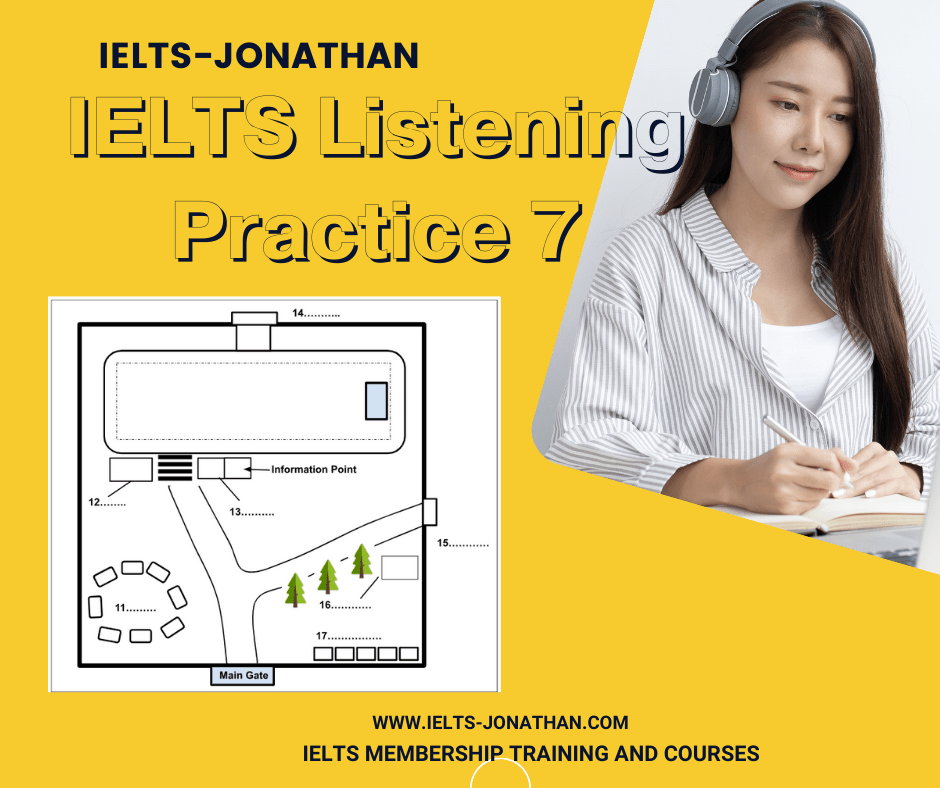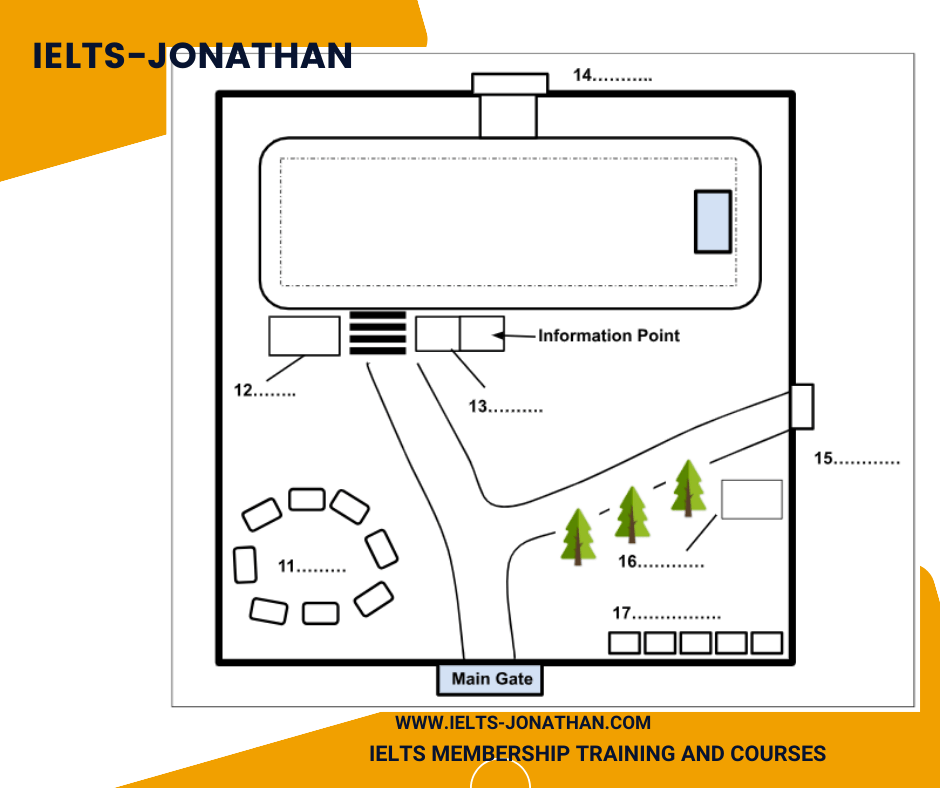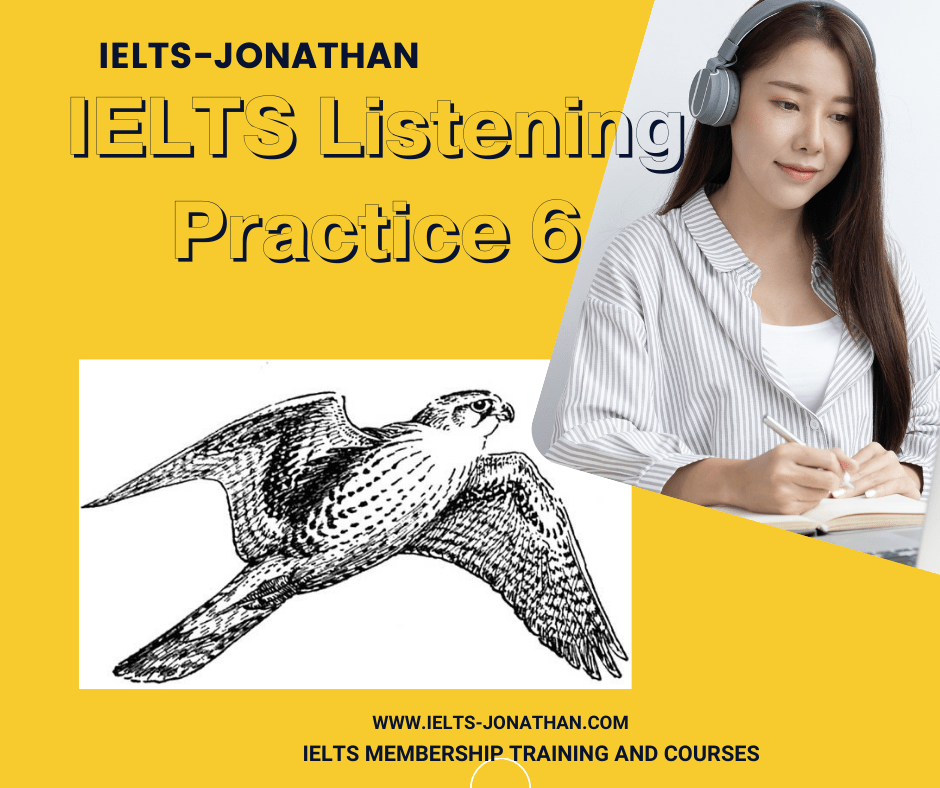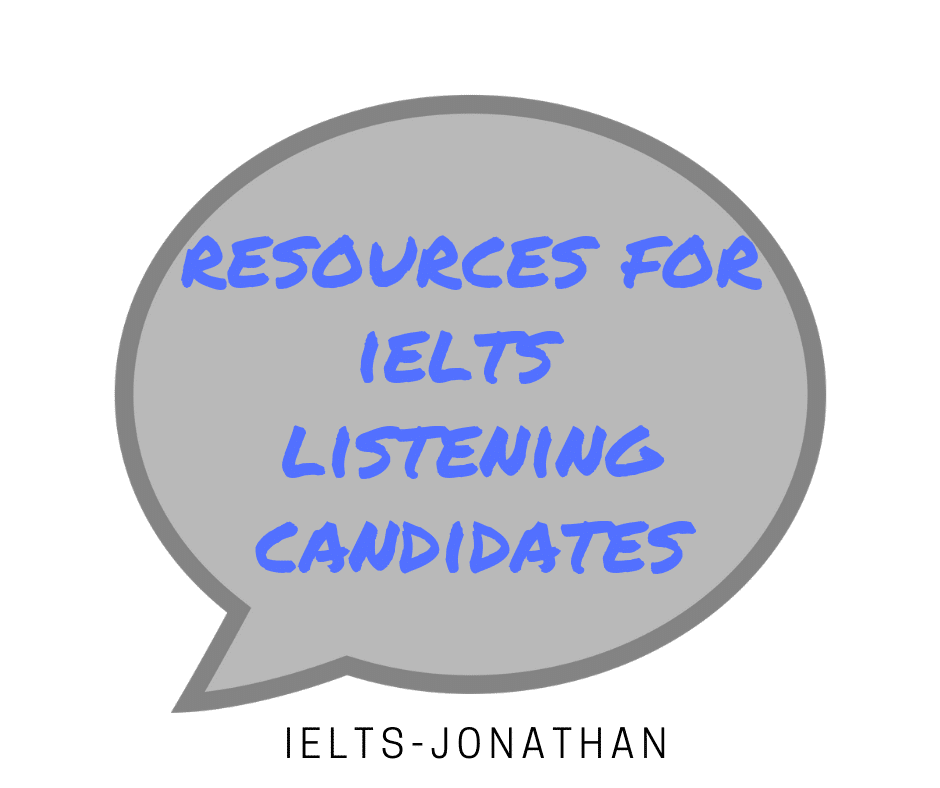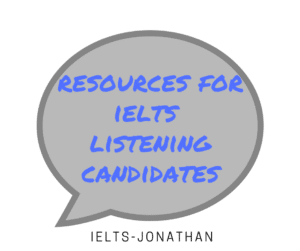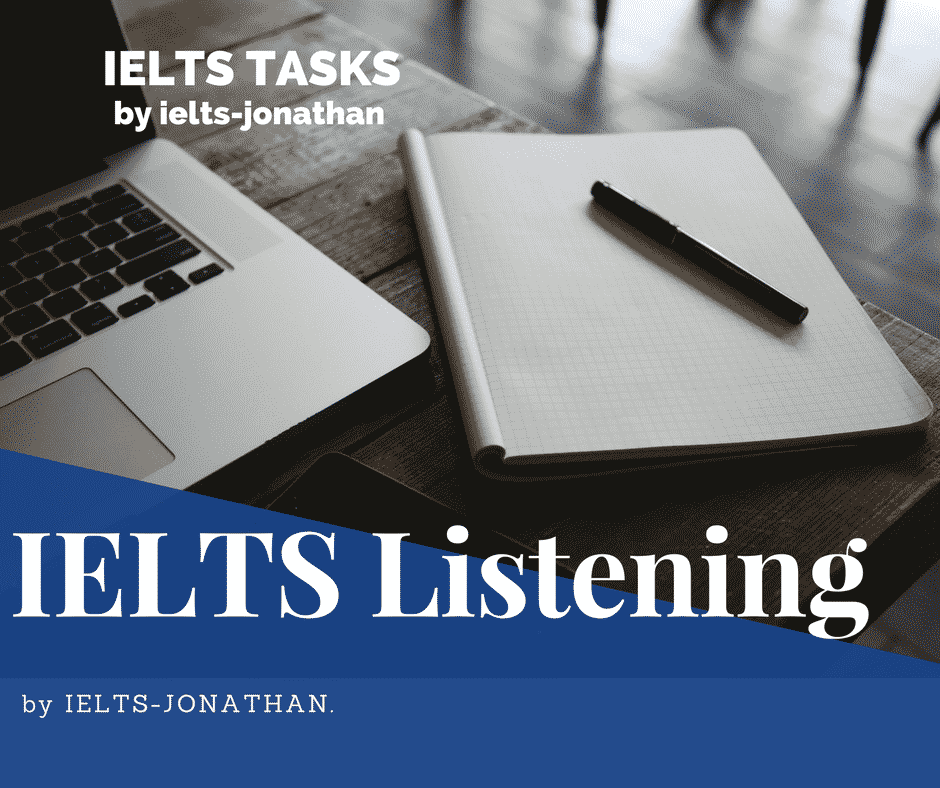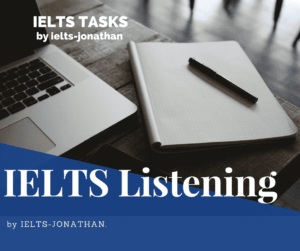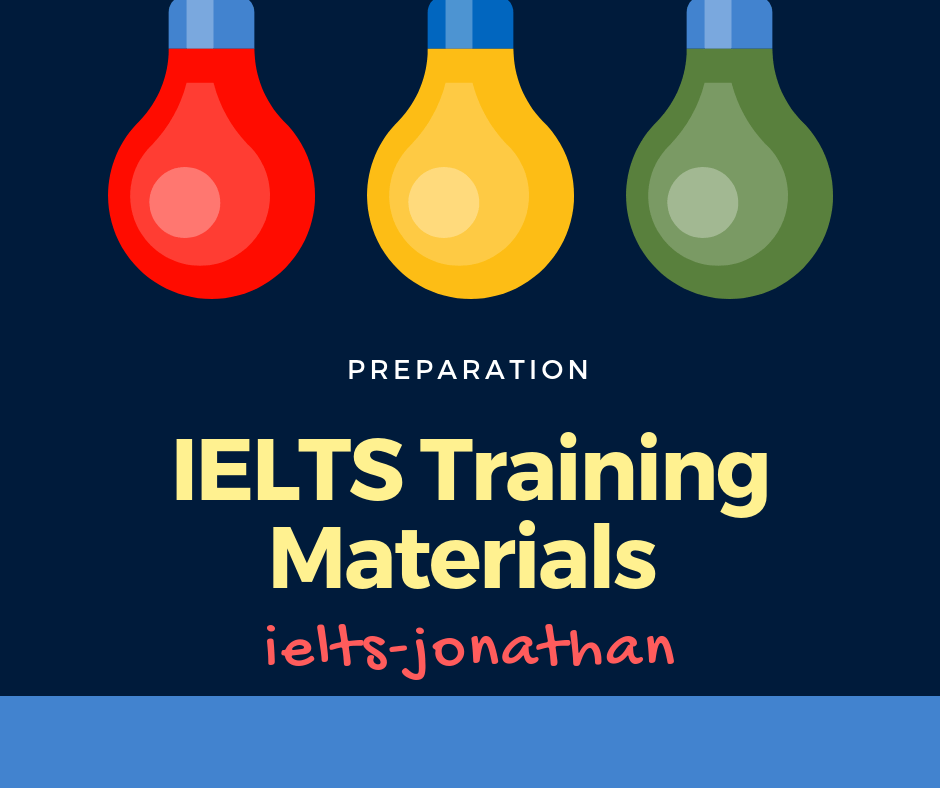IELTS LISTENING Practice 7
Test Format
This part of the IELTS test lasts for about 30 minutes and at the end of the complete test there is an extra 10 minutes to allow you time to transfer your answer to the answer sheet.
There are four parts to the listening test and they are presented in four sections.
It is important that you are prepared for the next section to come so try not to check answers you have completed as the next section begins. Remember, don’t check answers as the new section begins!
Listen to the complete test and then move onto the next section quickly, as would happen in the test. This makes your expectations of the test more realistic!
In the test you will need to use a pencil to note answers and when the test script begins, you write your answers on the question paper as you hear them.
There are always some instructions at the beginning of each section so listen carefully but also use this time to look through the questions to come as this will help you keep focussed!
There are 40 questions in total and it is important that you answer all the questions as each one carries just one mark.
Once you have completed all four parts of the Listening test you have ten minutes to copy all of your answers onto a separate answer sheet.
Once you have done this, if there are any gaps, then this is the point to look at the question again and make a guess!
A blank space will receive no mark at all!
Instructions to the candidates
In the actual test you will be given the following instructions,
- do not open this question paper until you are told to do so
- write your name and candidate number in the spaces at the top of this page
- listen to the instructions for each part of the paper carefully
- answer all the questions
- while you are listening, write your answers on the question paper
- you will have 10 minutes at the end of the test to copy your answers onto the separate answer sheet; use a pencil
and at the end of the test you will be asked to hand in the question paper.
| So lets begin, |  |
1 IELTS Listening Practice Test Questions 1 – 10 Completing Tables and Notes
This is the first part of your listening test where you get to listen to the audio for questions 1 to 10. Remember you need to answer the questions as you are listening to the audio.
At the beginning listen to the instructions for each part of this section carefully and prepare yourself by looking at the questions to come by making predictions.
Remember that you are using a pencil and that you have to answer all the questions. A blank will receive no mark. You can see where the questions are by numbered order.
Start the audio and while you are listening, write your answers with a pencil on the question paper if you have printed it, or write the question number and answer on notepaper.
When you have completed all four parts of the Listening test you have ten minutes to copy your answers onto a separate answer sheet.
Practice this because it is a good habit and then you can check the answers given at the end.
IELTS Listening Test 7 – Part 1
As you are listening to the instruction there is always an example of what you must do.
Question Example
Questions 1-10
Pay attention to the instructions below:
Complete the form below.
Write ONE WORD AND/OR A NUMBER for each answer.
Instructions you will hear.
You have completed the first section of your Listening test. Now move on to Listening section 2
You have completed this section but don’t check your answers in the real test. Move to the next section and begin to think about predicting the information for the gaps
2 IELTS Listening Practice Test Questions 11 – 20 Matching letters to questions and Labeling a Plan
At the beginning listen to the instructions for each part of this section carefully and prepare yourself by looking at the questions to come by making predictions.
Start the audio and while you are listening, write your answers with a pencil on the question paper if you have printed this .
When you have completed all four parts of the Listening test you have ten minutes to copy your answers onto a separate answer sheet.
IELTS Listening Test 7 – Part 2
Questions 11-17
Label the plan of the rock festival site below.
Questions 18-20
Complete the sentences below.
Instructions you will hear
You have completed the second section of your Listening test. Now move on to Listening section 3
You have completed this section but don’t check your answers. Move to the next section and begin to think about predicting the information for the gaps
3 IELTS Listening Practice Test Questions 21 – 30 Note taking
Start the audio and while you are listening, write your answers with a pencil on the question paper if you have printed this .
At the beginning listen to the instructions for each part of this section carefully and prepare yourself by looking at the questions to come to making predictions.
IELTS Listening Test 7 – Part 3
Questions 21-23
Choose THREE letters, A-G.
Questions 24-27
Choose the correct letter, A, B or C.
Questions 28-30
Complete the sentences below.
Write NO MORE THAN TWO WORDS for each answer.
Instructions you will hear
You have completed the third section of your Listening test. Now move on to Listening section 4
You have completed this section but don’t check your answers. Move to the next section and begin to think about predicting the information for the gaps
4 IELTS Listening Practice Test Questions 31 – 40 Table completion and Multiple Choice Statement Completion
At the beginning listen to the instructions for each part of this section carefully and prepare yourself by looking at the questions to come to making predictions.
IELTS Listening Test 7 – Part 4
Questions 31-33
Complete the note below.
Write ONE WORD ONLY for each answer.
Questions 34-38
Complete the flow-chart below
Write ONE WORD ONLY for each answer
Questions 39-40
Choose the correct letter, A, B or C.
Instructions you will hear.
You now have ten minutes to copy your answers to all four sections of the Listening test onto your answer sheet.
Do that now, but do this carefully as any mistakes, answers in the wrong place or answers that cannot be read won’t receive a mark.
You have reached the end of your Listening test; you can access the answers here and see how well you have done
You have completed all the sections and have time to check your answers and complete the answer sheet.
Remember that answers that are incomplete, have two many words or are left blank will receive no mark.
My Advice is:
For this practice, once you have checked your answers, tally your score to work out your IELTS Listening Band and then review the answer you got wrong or were incorrect.
Was it a listening error or how you wrote down the answer?
Listen again to that section to check or note how you should have written the answer.
Adapted from takeielts.org
